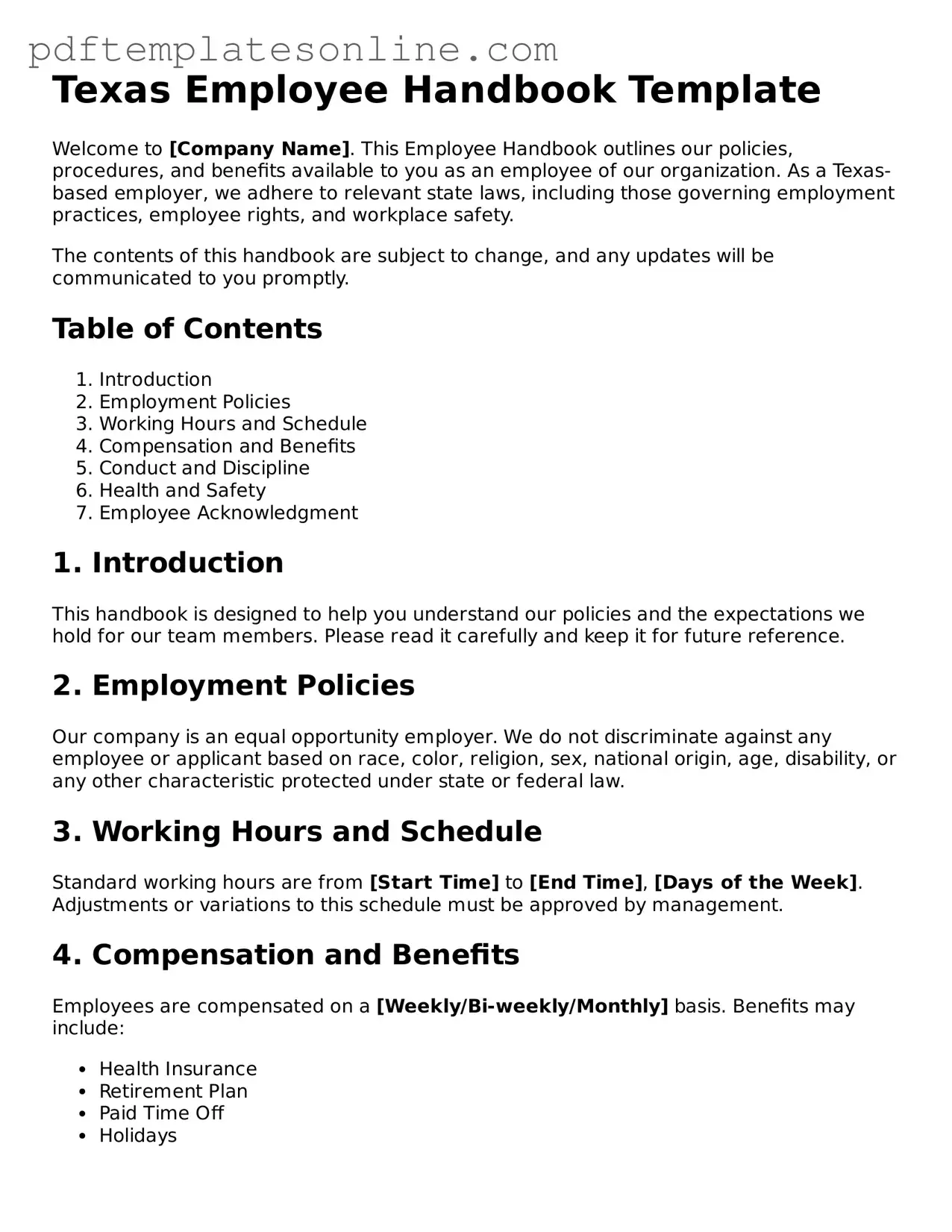Filling out the Texas Employee Handbook form can be straightforward, but many people make common mistakes that can lead to confusion later on. One frequent error is not reading the instructions carefully. Skimming through the guidelines can result in missing critical information that could affect your employment status.
Another mistake is providing incomplete information. Omitting details such as your contact information or job title can create unnecessary delays in processing your form. Ensure that every section is filled out completely to avoid complications.
Many individuals also fail to update their information when necessary. If you change your address or phone number, it’s crucial to submit an updated form. Outdated information can hinder communication between you and your employer.
Some people overlook the importance of signatures. A common mistake is forgetting to sign the form or failing to date it. Without your signature, the form may not be considered valid, which can lead to issues with your employment records.
Additionally, not keeping a copy of the completed form is a significant error. Retaining a copy for your records can be helpful if questions arise later. It’s always wise to have documentation of what you submitted.
Another mistake is misunderstanding the policies outlined in the handbook. Employees often sign the form without fully grasping the rules and regulations. Take the time to read through the handbook and ask questions if anything is unclear.
Some individuals may also rush through the process. Filling out the form in haste can lead to careless errors. Take your time to ensure accuracy and completeness, as this will save you from potential headaches down the road.
Lastly, neglecting to seek assistance when needed is a common oversight. If you’re unsure about any part of the form, don’t hesitate to ask HR for help. They are there to support you and can provide valuable guidance.
